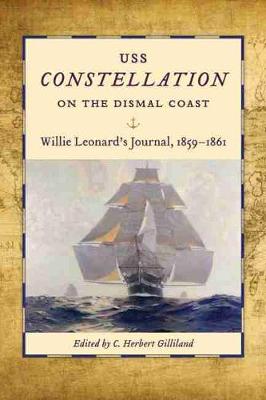Studies in Maritime History
1 total work
USS Constellation" on the Dismal Coast
Published 1 January 2013
Today the twenty-gun sloop USS Constellation is a floating museum in Baltimore Harbor; in 1859 it was an emblem of the global power of the American sailing navy. When young William E. Leonard boarded the Constellation as a seaman for what proved to be a twenty-month voyage to the African coast, he began to compose a remarkable journal.
Sailing from Boston, the Constellation, flagship of the U.S. African Squadron, was charged with the interception and capture of slave-trading vessels illegally en route from Africa to the Americas. During the Constellation's deployment, the squadron captured a record number of these ships, liberating their human cargo and holding the captains and crews for criminal prosecution. At the same time, tensions at home and in the squadron increased as the American Civil War approached and erupted in April 1861.
Leonard recorded not only historic events but also fascinating details about his daily life as one of the nearly 400-member crew. He saw himself as not just a diarist, but a reporter, making special efforts to seek out and record information about individual crewmen, shipboard practices, recreation and daily routine--from deck swabbing and standing watch to courts martial and dramatic performances by the Constellation Dramatic Society.
This good-humoured gaze into the lives and fortunes of so many men stationed aboard a distinguished American warship makes Gilliland's edition of Willie Leonard's journal a significant work of maritime history.
Sailing from Boston, the Constellation, flagship of the U.S. African Squadron, was charged with the interception and capture of slave-trading vessels illegally en route from Africa to the Americas. During the Constellation's deployment, the squadron captured a record number of these ships, liberating their human cargo and holding the captains and crews for criminal prosecution. At the same time, tensions at home and in the squadron increased as the American Civil War approached and erupted in April 1861.
Leonard recorded not only historic events but also fascinating details about his daily life as one of the nearly 400-member crew. He saw himself as not just a diarist, but a reporter, making special efforts to seek out and record information about individual crewmen, shipboard practices, recreation and daily routine--from deck swabbing and standing watch to courts martial and dramatic performances by the Constellation Dramatic Society.
This good-humoured gaze into the lives and fortunes of so many men stationed aboard a distinguished American warship makes Gilliland's edition of Willie Leonard's journal a significant work of maritime history.
